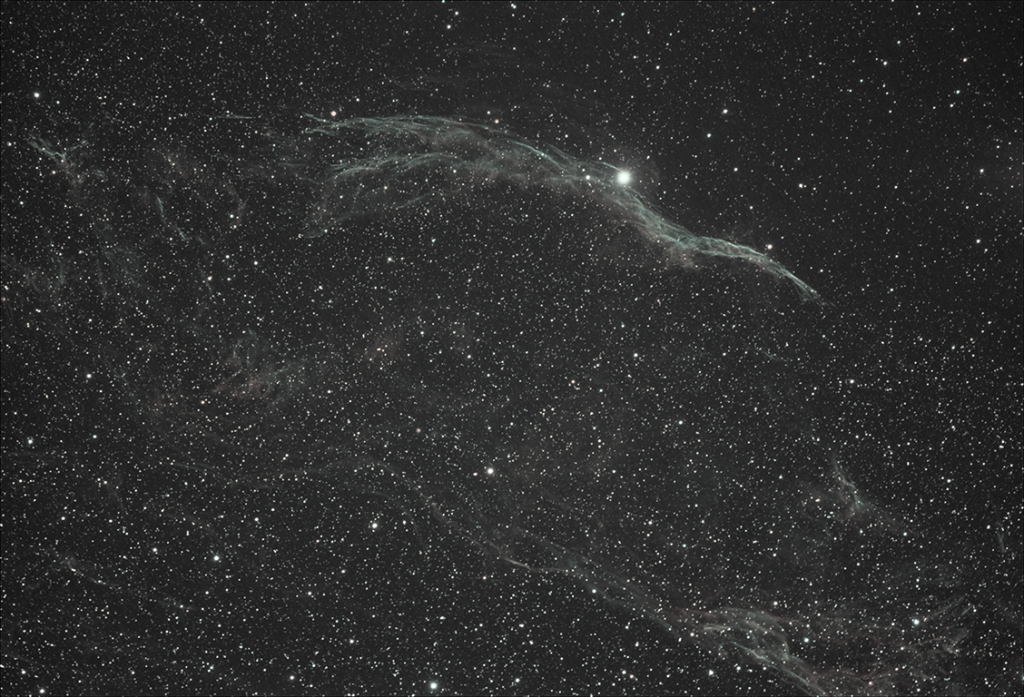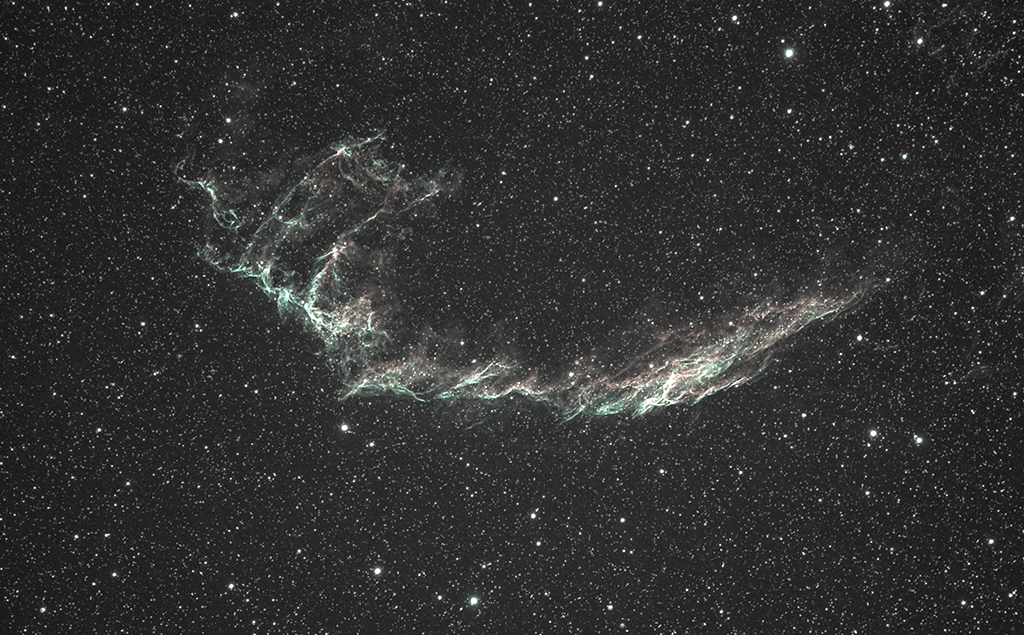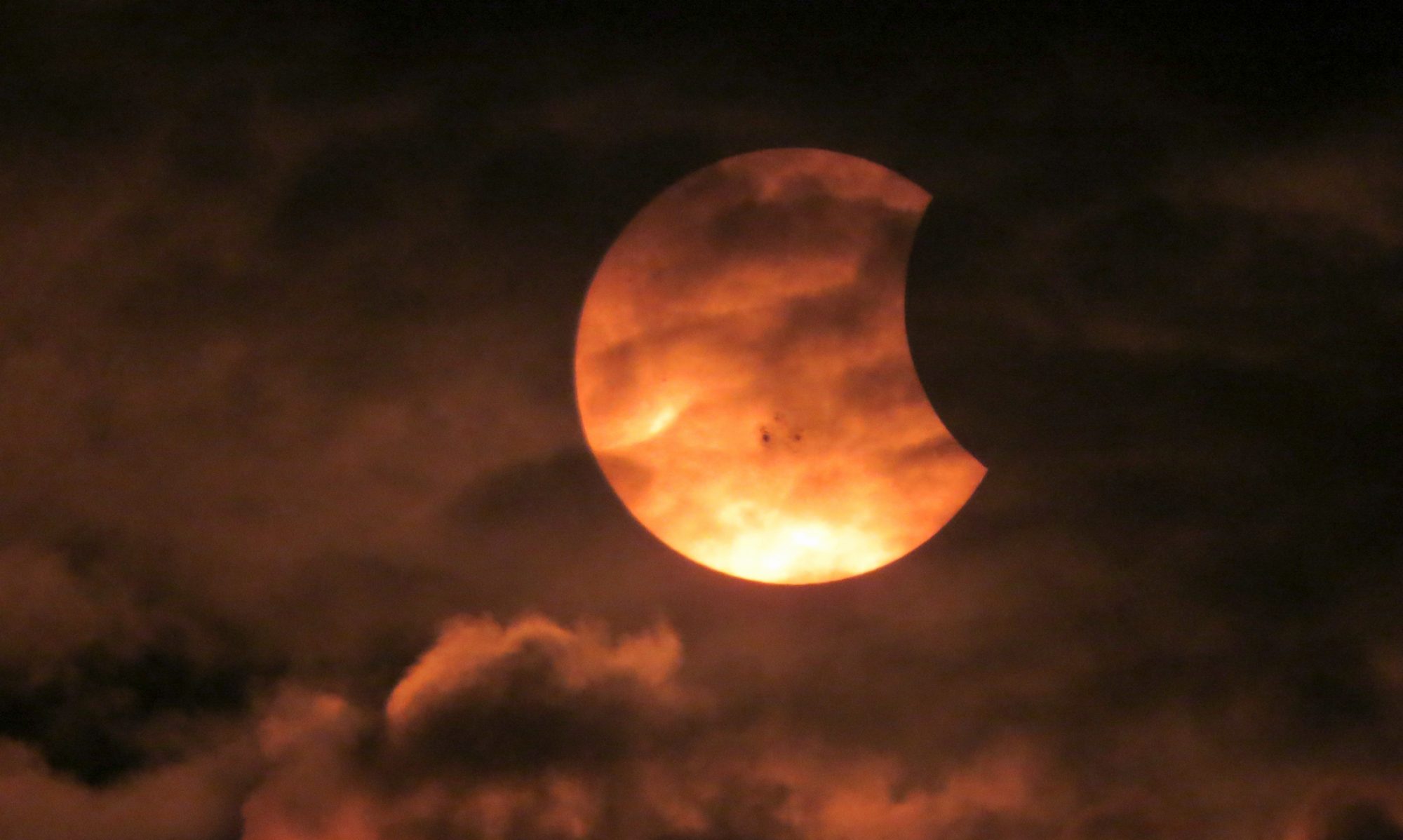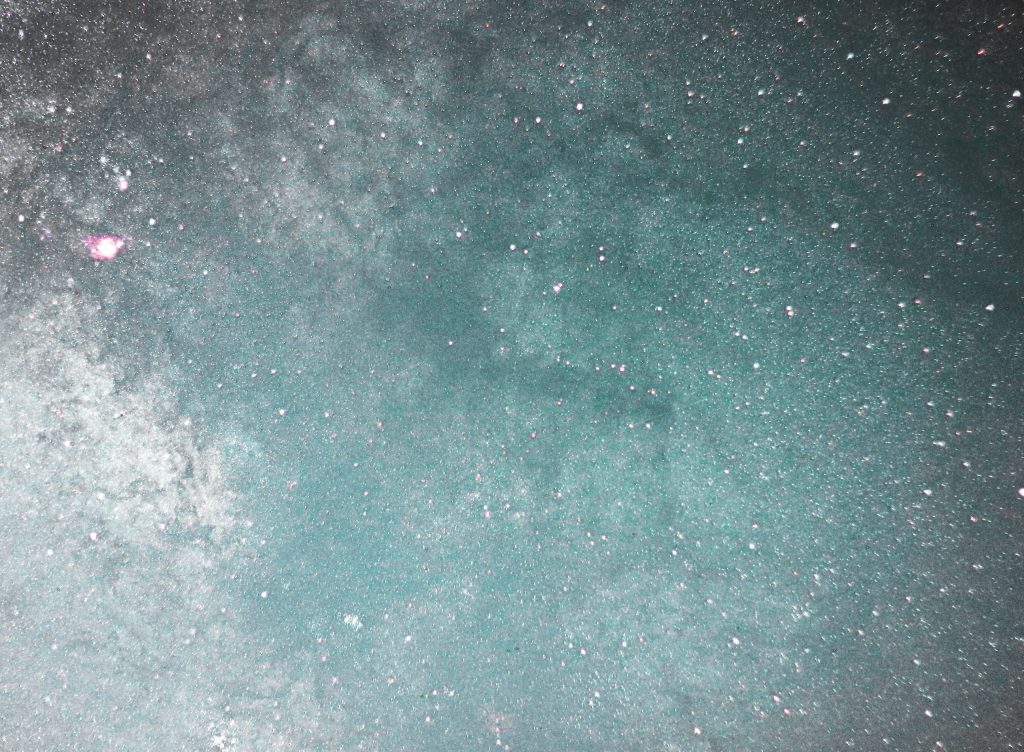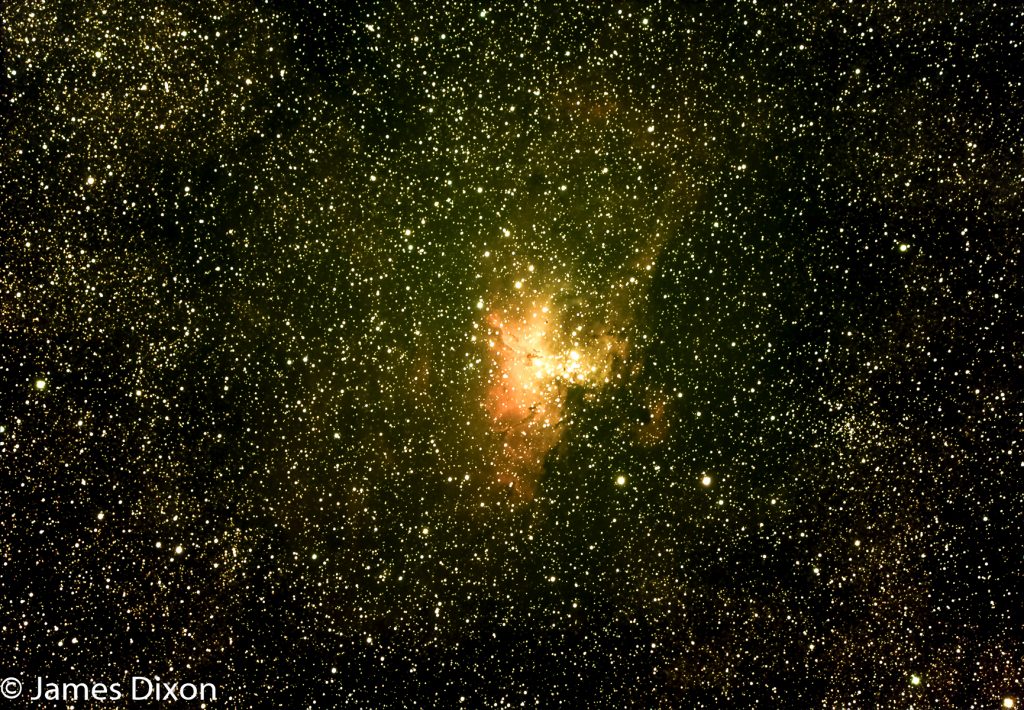As mentioned in an earlier post, I set up my 11″ Elf with the Hyperstar so I could shoot at f/1.9 and added an Optolong L-eNhance filter to the setup. This filter blocks most light but lets the reddish Hydrogen-alpha line, the blueish Hydrogen-beta line, and the greenish Oxygen III through so that your color camera can still do RGB photography. I used my ZWO ASI294MC Pro.
I’ve never shot the Veil Nebula before. It is a large (6 times the diameter of the Moon) but faint supernova remnant in the constellation of Cygnus the Swan. Recent measurements have it about 2400 light years away and the progenitor star exploded 10,000 to 20,000 years ago.
Click the images for full size.
